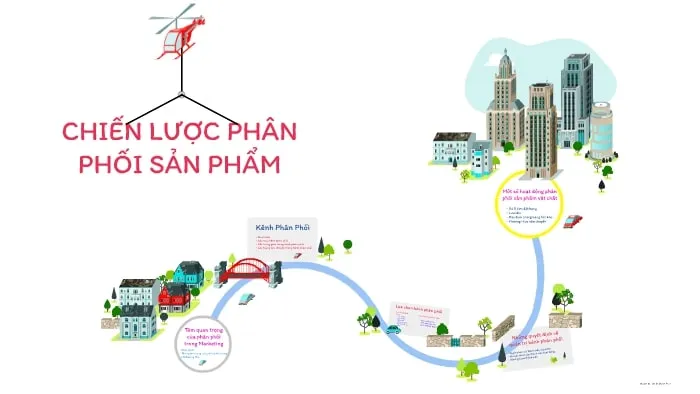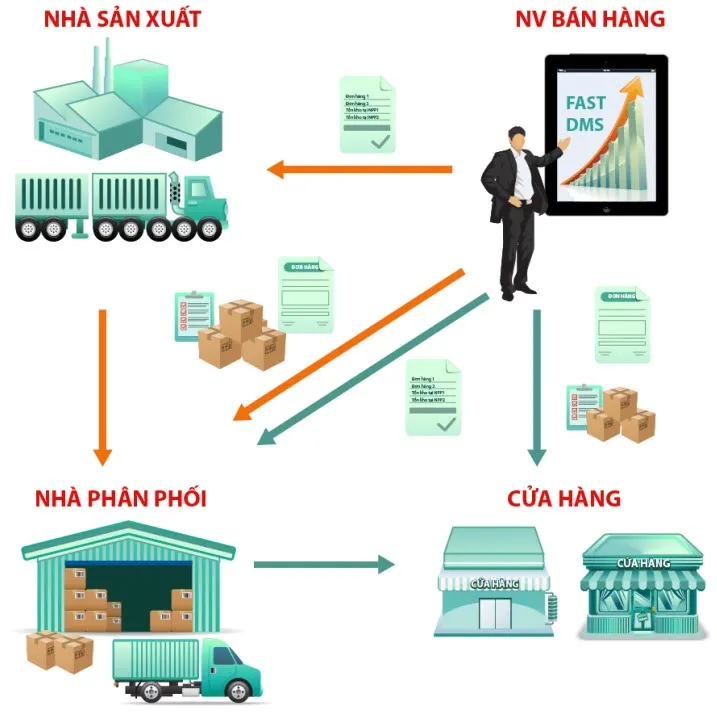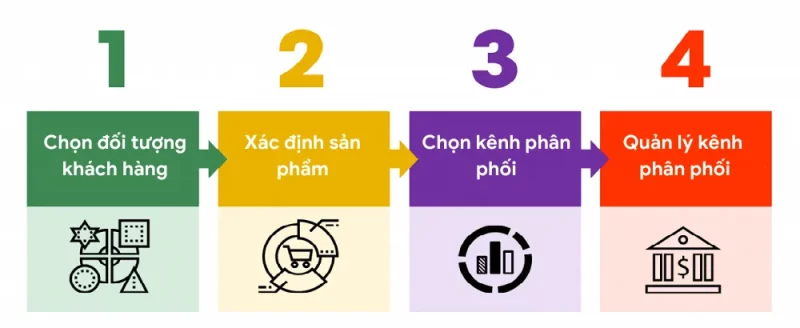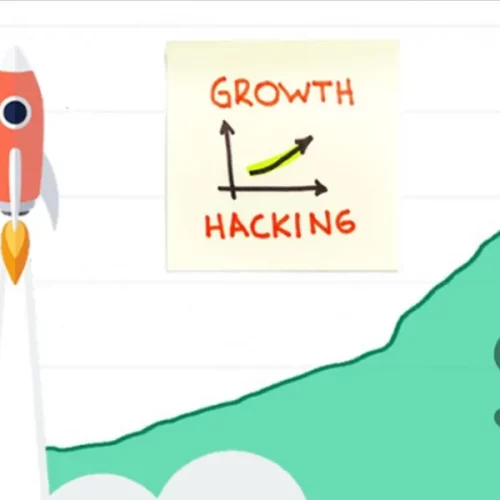For businesses doing business, their ability to sell will depend greatly on the distribution channels and product distribution strategies they choose. Because today there are countless ways for a business’s goods to reach customers.
I. What is the product distribution strategy?
1. Concept
A product distribution strategy is a system of processes and plans established to transport goods from suppliers to customers or end consumers. This is one of the four basic elements of Marketing, playing an extremely important role for every business.

There are 2 basic forms of distribution:
- Direct product distribution strategy : Products will be sent directly from suppliers to consumers.
- Indirect product distribution : Products are sent through intermediary distribution channels, then reach consumers.
Direct distribution is mostly suitable for small businesses. For larger businesses, this form of distribution becomes risky, ineffective, and the costs will be huge. Therefore, medium and large enterprises will often apply the strategy of distributing products through intermediary channels.
Intermediary channels can be agents, retailers, brokers or even consumers themselves. They will be the units participating in the process of bringing the product to the final consumer. When deciding to distribute products through intermediary channels, businesses need to pay attention to the following characteristics:
- Marketing plans need to be considered very carefully before applying, because intermediaries will be the ones performing the distribution function.
- Costs and profits will be affected based on the decision to choose product distribution channels.
- Product distribution strategy circulates quickly, easily penetrating the market.
- Depending on the trust level of the intermediary, the connection between consumers and businesses will be affected positively or negatively.
- The product may need to go through many intermediary channels before reaching the consumer (second and third level channels).
- Intermediaries help businesses increase their competitiveness in the market.
- Intermediaries may limit feedback from customers.
2. Four product distribution models
After determining the distribution channel, in the next step, businesses need to determine which of the following 4 types of strategies their products should apply:

- In-depth product distribution :
Businesses apply this type with the goal of penetrating the market as deeply as possible. At that time, businesses will want to promote the expansion of market coverage, usually by establishing many chain stores, becoming partners with many retailers, etc.
- Distributing selected products :
Applying this distribution strategy will help businesses choose product prices aimed at a specific market. The user experience of businesses applying this product distribution channel strategy will be enhanced, along with the brand’s position in the market.
- Exclusive distribution :
The number of stores of businesses choosing this type of distribution is often extremely limited, the product will only appear in a few specific stores. However, this form is applied to high-end products with intentionally limited quantities on the market. This method helps maintain the brand’s image and product exclusivity.
- Mass distribution strategy:
Mass distribution strategy is the way a business’s products or services reach customers widely. It includes decisions about how, where, and to what extent a product is distributed to meet the needs of target customers.
This strategy is often applied to essential consumer goods such as food, pharmaceuticals, clothing, household appliances, etc.
An effective mass distribution strategy requires the optimization of factors such as distribution channels, transportation, storage, inventory management and supply chain management. Objectives of a mass distribution strategy tea is to optimize product access to target customers, increase efficiency and reduce costs in the distribution process.
Product distribution channels depend on the type of product the business sells. Businesses need to consider choosing the most appropriate type to achieve their growth goals.
3. Benefits of building an effective distribution strategy

Successfully building a product distribution strategy will help businesses gain the following advantages:
- Cost savings : Businesses can easily make cost decisions such as reducing ineffective intermediary channels, minimizing transportation and warehousing costs, etc. In addition, quality intermediary channels will also contributes to reducing costs for manufacturing enterprises.
- Increase the effectiveness of Marketing campaigns : Businesses can link together and carry out joint advertising campaigns easily, especially with the presence of intermediary channels. This will make it easier to attract customers, and advertising costs will be divided equally.
- Market expansion : Using effective distribution strategies helps businesses grasp the goods circulation map. Through intermediary channels, products will reach consumers more quickly, the distribution network will quickly expand, and the reach of businesses will also grow.
- Enhance control: Businesses clearly understand every step in the distribution process so that goods reach consumers.
- Easily receive feedback : Not only from customers, information about the amount of goods sold, the number of goods imported per trip, the time between each order, etc. from agents is also a way for businesses to receive feedback. Understand where their products are in the market, thereby making reasonable changes and developing the ability to meet customer needs.
- Increase development speed : With effective product distribution strategies, businesses can quickly reach new market shares. Intermediary channels also help reach more customers that businesses cannot reach, helping the customer file expand more and more, increasing the development process of the business.
- Promote the core values of the business : Businesses shape product value and brand image in the market through decisions to limit or increase product offerings.
III. Steps to building an effective distribution strategy
All business activities take place at the point of sale and directly affect the business’s revenue and market share. Therefore, building a distribution plan is a prerequisite to ensure businesses operate with as little risk as possible and improve their ability to compete successfully at the point of sale.
To be able to make the right decisions in the process of building a product distribution strategy, businesses need to properly follow the following steps:

1. Choose customer target
Businesses need to firmly understand who the customers they want to target are during the strategy building process. Each customer needs a different approach and will affect the campaign the business is pursuing.
Sketching customer portraits will help businesses address questions such as:
- Who are your customers?
- How do they often buy?
- What are their needs?
- …
The answers to this question will directly affect the distribution strategy that the business is aiming for. It is very difficult for businesses to make customers trust and choose their brand if their products do not solve customer needs or appear in a market that does not have much demand.
2. Identify brand products
Next, businesses need to determine who their product wants to target and what value it holds. Businesses need to grasp two parts:
- Brand assets : helps businesses know their position and value in the market as well as in the eyes of consumers. Businesses that possess strong brand assets have great advantages in flexible marketing methods and imposing targets on the business’s agents.
- Type of goods : depending on the type of goods, businesses will decide they should apply the type of distribution strategy that best suits them.
To determine this, in addition to conducting internal research, businesses also need to research the market they are targeting. Building a SWOT market research table is the simplest and most effective way to support businesses in this step.
3. Choose product distribution channels
After collecting and analyzing customer, market and product data, businesses now have enough basis to choose the most suitable channel to apply to their product distribution strategy. If businesses operate at a small and medium level, they should provide goods to consumers themselves (direct distribution), but they should also consider using a combination of several intermediary channels, due to the speed The market coverage of intermediaries is very large, with costs and risks also being more or less minimized.
At the same time, businesses need to pay attention to logistics capabilities. Renting or building more warehouses, investing in delivery teams and transportation vehicles, focusing on training sales and marketing staff will contribute to promoting the market development process of the business.
4. Manage product distribution channels
Businesses must always closely manage distribution channels during the process of operating product distribution strategies. A distribution channel is considered effective if it meets the following criteria:
- Quality standards : Channel members (channel operations team and sales team) ensure reputation, sales skills, and ability to access the target market.
- Functions of distribution channels : Channel members must understand the goals, functions, powers and requirements of the distribution channels they are responsible for. Businesses also need to train skills and provide vision and distribution strategy to channel members. In addition, businesses should also introduce reward and punishment policies to improve human resource efficiency in the channel.
- Distribution channel policies : Distribution channels need to ensure strict implementation of advertising, discount and promotion policies that the business offers.

Evaluating the activities of channel members is an important activity to ensure that the product distribution strategy takes place regularly, without blockages in any stage. Evaluation activities need to be performed regularly according to criteria such as sales, inventory, delivery speed, etc.
Businesses also need to apply sales to channel members to evaluate that channel’s performance. Thereby, businesses can easily grasp the results of the entire channel’s activities to have plans to promptly supplement and change product distribution campaigns to achieve the desired effect.
V. Summary
Product distribution strategy is always the “backbone” of every business’s business process. An effective product distribution campaign is not only clearly shown in the economic aspect, but also shown through consumer evaluation of the business. Therefore, understanding how to build product distribution strategies is the key to helping businesses get closer to success.




